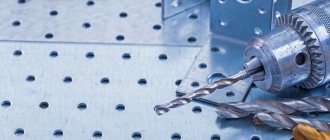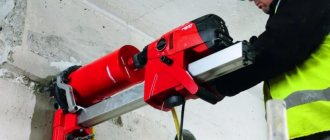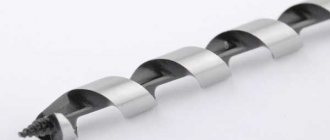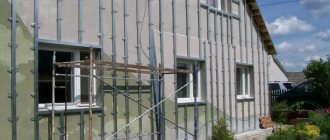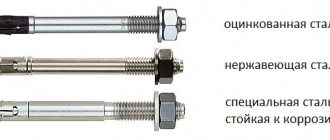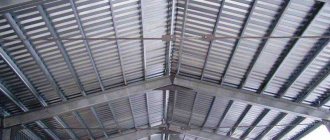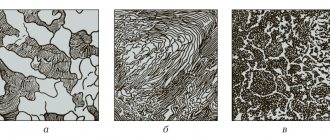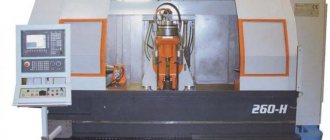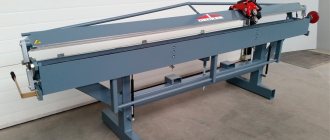When doing repairs, many owners have to perform a wide variety of work, among which drilling is quite common. However, to perform this task well, you must have a suitable drill available. There are no problems with purchasing this device, given that there are a large number of different types on the building materials market.
Therefore, every home craftsman who has purchased a drill should also worry about choosing good drills. Otherwise, they will quickly use up their service life, and you will have to spend money on new ones.
In stores you can find a large number of different drills, differing in length, diameter, and material for which they are intended. And even before you start creating a hole on the surface of the structure, you should decide on the appropriate drill size . To avoid mistakes here, it is necessary to take into account the type of work being performed.
What is a cobalt drill?
This name was given to a tool for the working part of which high-speed steel with cobalt impurities was used. Such drills with cobalt are considered universal, because with their help you can drill not only stainless steel, but also other materials that are distinguished by great strength and also a high degree of toughness. The thing is that cobalt begins to melt at extremely high temperatures. That is why drills, which were created using high-speed steel alloyed with cobalt, withstand high temperatures well and also have good mechanical properties. With their help you can create high-precision holes.
Types by design
According to their design, drills belonging to the cobalt category are divided into two main types: single- and double-sided.
The first ones, in full accordance with their name, have a cutting part made on only one side. Double-sided drills are essentially two tools in one body. Their design feature is that there is a separate cutting part at both ends. The convenience of using such a tool is that if one of its cutting parts breaks, you can immediately use the second one, simply by reinstalling the drill in the chuck of the equipment used.
Double-sided cobalt drills are intended for installation work on thin-walled materials
Characteristic
Let's look at what characteristics cobalt drills have.
Among the main features of these tools, the following should be highlighted:
- Cobalt drills do not move to the side when starting to drill a hole. This means that when working with them, you do not need to first make a hole with a core where the center of the future hole will be.
- Holes in metal, after processing it with a cobalt drill, are perfectly accurate. There are no burrs or defects on their inner walls.
- Characterized by increased wear resistance.
- Doubles the drilling speed compared to other drills.
- Can be used for drilling pipes.
- Requires little effort during drilling.
Cost of tools
On average, the cost of cobalt drills used for work on stainless steel is 4–5 times higher than the price of conventional ones. The cost of a drill belonging to the cobalt category is influenced by a number of parameters:
- design (one- or two-sided);
- working diameter;
- length (total and working);
- the brand name under which the drill is manufactured.
Cobalt drilling tools manufactured by well-known and reputable European companies have the highest price on the domestic market. A budget option are drills of the domestic brand “Zubr”, also produced in the “Cobalt” category. Despite the low cost, domestic cobalt tools are of decent quality and allow you to create precise and neat holes in the material being processed.
Material
Make it clear that a cobalt drill must be made exclusively from steel that has been alloyed with cobalt.
Most often you can find drills made from R6M5K5 tool steel. The number at the end of the marking (after the letter “K”) indicates how many percent of cobalt is contained in the steel. For example, R6M5K5 steel contains 5% cobalt. This guarantees its high heat resistance, which increases the heat resistance of the alloy.
Marking and color of cobalt drills
In accordance with GOST 2034-80, on the shanks of drills with a thickness of more than three millimeters, in addition to the diameter, the grade of metal from which this tool is made must be applied. Two types of marking are allowed: in the form of a GOST alphanumeric code and an international abbreviation indicating the type and percentage of the ligature. GOST 20698-75 defines three types of steel for making drills with cobalt: P6M5K5, P9K5 and P9M4K8. Here, the first letter means “high-speed steel,” the second is the average tungsten content in percent, the letters M and K are molybdenum and cobalt additives, respectively, and the numbers following them are their average percentage content. For example, in one of the most common cobalt steels, P6M5K5, the cobalt content is 4.70÷5.20%, and in P9M4K8 - 7.50÷8.50%. In accordance with the international designation, the shank of a drill made from them will be engraved with HSS Co 5 or HSS Co 8 (the first three letters are the English abbreviation for “high-speed steel”).
As a result of additional processing of the spiral surfaces of cobalt drills, their corrosion and wear resistance increases, and the sliding of chips along the grooves improves. The most common are three types of such processing: steam oxidation (blueing), mirror polishing and application of wear-resistant coatings. In the first case, the instrument becomes black, and in the second it becomes shiny silver.
Titanium nitride, which has a golden color, as well as titanium-aluminum nitride, which gives the tool a grayish-bluish color, are most often used as wear-resistant coatings.
Color and markings
Each cobalt drill has a specific marking. In it, the letter of the chemical element is first written, and then a number indicating what percentage of this element is contained in the steel used to make the drill.
Usually several elements are indicated in this way (P - tungsten, K - cobalt, M - molybdenum, F - vanadium).
For example, steel R6M5K5 has the following impurities:
· 6 percent tungsten;
· 5 percent molybdenum;
· 5 percent cobalt.
We especially note that drills with a diameter of up to 2 millimeters often do not have such information in their markings. It is used in drills with a diameter of 2-3 millimeters. And if the drill is larger, then the marking may include a trademark, as well as (this rarely happens) an accuracy class.
Don’t be surprised if you see in a store that cobalt glass comes in different colors.
You can usually find drills in the following colors:
- black and gold;
- bright gold;
- black;
- grey.
The black-gold color is a sign that the steel has undergone a heat treatment called tempering. This is done to eliminate internal tension in it.
The golden color is a sign that titanium nitride has been added to the steel. This is done in order to improve the strength of the steel. When working with such a drill, there will be less friction.
Black color is a sign that the drill was treated with superheated steam during its manufacture. This provides improved wear resistance.
The gray color is from a drill that has not been finished. These are the lowest quality cobalt drills.
Advantages of cobalt drills
As noted earlier, the main advantages of these tools are high wear resistance and heat resistance. In other words, cobalt drills will last longer in everyday use, since they are less susceptible to mechanical damage and hold up well at high melting temperatures.
In addition, the advantages and features of these drilling tools also include:
- Large sharpening angle (approx. 135°), which is excellent for drilling round and smooth surfaces.
- A specific design that allows for precise and accurate drilling of large holes without additional devices.
- Ground groove for quick chip removal.
- Reinforced shank, which minimizes the possibility of breakage and, accordingly, increases the service life.
- The presence of cobalt in the composition of the tool, which allows drilling of tough metals such as aluminum, lead, copper or tin.
Advantages and disadvantages of cobalt drills
A cobalt metal drill has its advantages and disadvantages. The main advantages include, first of all, its resistance to high temperatures. Its mechanical properties are also outstanding compared to conventional drills. Since such drills can cope well with temperature loads, additional cooling is not required when drilling. This is critical when working with alloy and tough steel. Drilling non-standard surfaces (for example, rounded ones) is helped by a sharpening angle of 135 degrees.
There is perhaps only one drawback to a cobalt drill - its high price (about 4-5 times higher than conventional drills).
Recommendations for use
When working with hard steel grades, cobalt metal drills must be used with a number of nuances. If you follow certain rules, the drill will last longer.
Here's what to remember:
- work only at low drill speed;
- before drilling through, you need to reduce the speed of the drill so that the drill does not jam;
- if forced cooling is still necessary, it is worth using oleic acid for it, dipping a drill into it from time to time;
- if the hole needs to be made with a large diameter, it must be pre-drilled with a thinner drill.
Drilling with a cobalt drill for metal
Even before you start drilling, you should decide the issue with the cutting mode. To clarify, let us inform you that the main parameters that affect such a mode are the following:
- Cutting speed . It is usually understood as the conditional peripheral speed of a drill for metal, which is demonstrated by the drill in relation to the element being processed. In other words, this parameter means the degree of rotation speed of the drill through metal. For example, it is possible to ensure the same cutting speed of 20 m/min, provided that a drill with a diameter of 1.0 is used for the work, and its rotation speed is 6366 times per minute, or you can use a device whose diameter is 10.0, and the frequency rotation is 637 rpm.
- Submission . We are talking about the degree of movement of the working device in the direction of the drilling axis over a period equal to one revolution. Accordingly, the unit of measurement is millimeter per revolution.
- Torque . This parameter determines the level of load that falls on the metal drill during cutting.
Each of the above parameters influence each other, and when choosing them it is necessary to take into account:
- The material in which the hole needs to be created;
- The material from which the metal drill is made is cobalt;
- Equipment used for work and type of cooling;
- Other factors, which include the degree of surface roughness, contamination, etc.
Help and advice when purchasing
If you are planning to buy a drill for infrequent use, you should save on your purchase and take a closer look at budget options. If the cobalt metal drill will be used frequently, be prepared to fork out some cash. In this case, you should choose expensive models from reputable manufacturers.
Note that if you are lucky enough to find drills made in the former USSR (they will definitely be marked P6M5K5), feel free to take them. This is essentially a guarantee of quality.
Features
Let's look at the main features that distinguish cobalt metal drills from other similar tools.
- The material used to manufacture such drills is only high-speed steel.
- Cobalt is used as the main alloying element that improves the characteristics of the manufacturing material. Drills made of high-speed steel alloyed with cobalt are able to successfully withstand significant mechanical and thermal loads, which makes it possible to successfully use them for drilling difficult-to-cut materials even without the use of forced cooling.
- The standard sharpening angle of a cobalt drill formed by the cutting edges is 135°.
Distinctive features of cobalt drills
